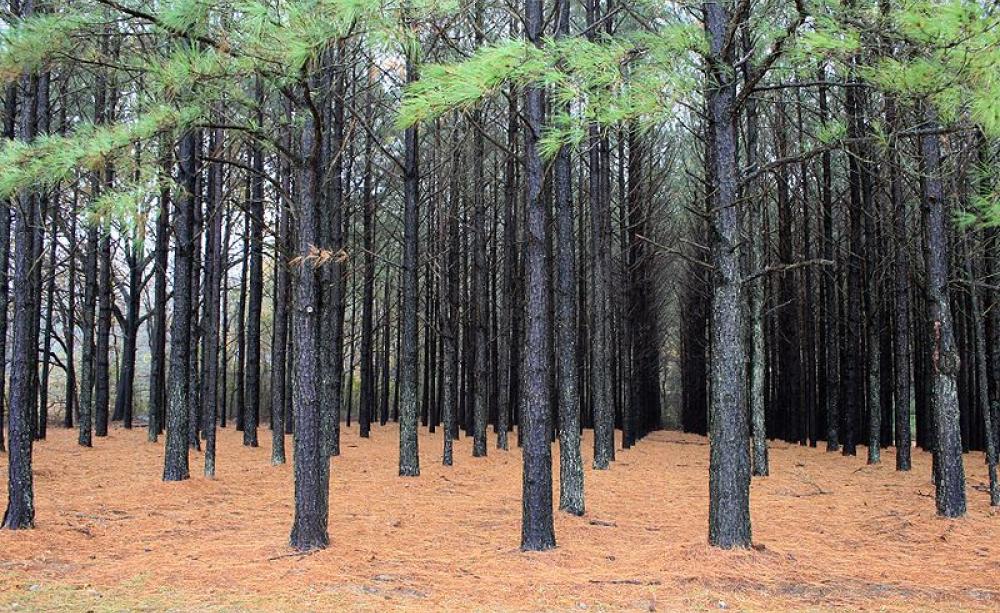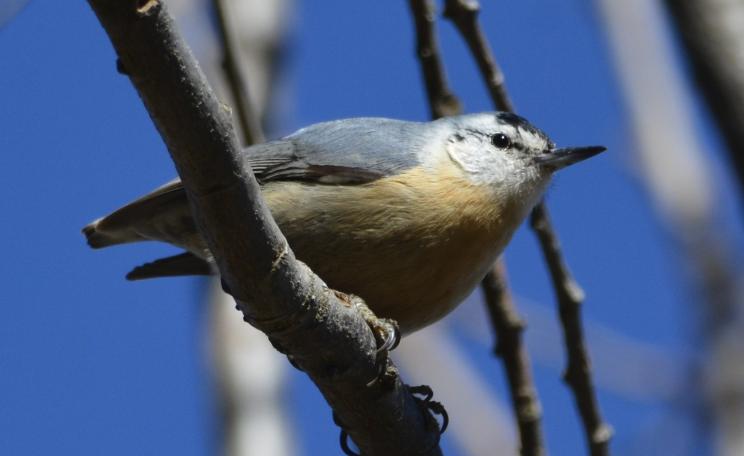-
It struck me recently, walking through the fiercely managed forests of Bellever, Dartmoor, that my childhood experience of forests as rich, tangled, ancient woodlands would not be the experience of many future children.
The word ‘forest’ in my mind summons the feel and smell of diverse old-growth, towering moss-clad beeches and twisting oaks, dense undergrowth overwhelmed with insects and fungi. Clambering over rocks carpeted in lichen and interspersed with feathery fingers of fern. Landscapes that embody hundreds of years of accumulation and regeneration.
It seems now that a ‘forest’ can be orderly rows of skinny, non-native conifers, planted too close together for any sunlight to penetrate the forest floor. Eerily empty places hosting a singular species, efficiently grown for human need.
Monocrops
The monocrops in Dartmoor are managed for timber but they reminded me of the similarly uninspiring tracts of ‘forest’ popping up around the world under a recent wave of panicked tree-planting for climate targets.
At the World Economic Forum in Davos, the WEF announced its support in planting and restoring one trillion trees globally. As forests are sinks that sequester and store atmospheric carbon, increasing forested area is essential to save us from climate dystopia.
But growing political momentum on climate change has erupted into a frenzy of over-simplified, blanket solutions: plant an unfathomable number of trees. Every environmental target now seems to be written in this way, as arbitrary targets that become meaningless in their implausibility and simplicity.
Frantically planting trees to ‘offset’ carbon emissions is part of a wider movement within conservation, known by some critics as ‘selling the right to harm’. Poor and damaging behaviour, such as emitting greenhouse gases or destroying biodiversity, is supposedly ‘cancelled out’ by paying to plant trees or improve biodiversity elsewhere.
A new scheme announced by Defra and the Forestry Commission in November last year aims to increase tree planting by landowners across England. Under the £50m Woodland Carbon Guarantee, newly planted trees will represent ‘Woodland Carbon Units’ that landowners can sell to the government at a guaranteed price, helping the UK to offset carbon emissions and reach Net Zero by 2050. These long-term payments to landowners should incentivise more tree planting. It sounds so logical, so simple.
Biodiversity
The Forestry Commission is responsible for the management of all publicly-owned forests and the regulation of private forests across the UK.
However, set up to expand Britain’s forests after over-extraction during World War I, the organisation is best characterised as a machine for timber production and embodies a vision of productivity and efficiency.
The Commission have been criticised over the years for relying heavily on planting non-native conifers in freakishly uniform rows, severely lacking in biodiversity. Have we forgotten the inherently tangled, interdependent nature of ecosystems, the ecological value of old-growth, the microcosm of habitats provided by diversity?
The reality is, it’s not as simple as ‘plant trees, save the world’. It matters what kind of trees are planted, where, and how. The urgency and artificiality of planting trees primarily to sequester carbon means selecting faster-growing species such as pine and eucalyptus.
Whilst they store carbon quickly, these trees are planted in tightly-packed monocultures – single species plantations of the same age, incomparable to the variety of form and structure that should characterise a forest. These plantations are known to be ecologically damaging, reducing soil fertility and enhancing fire risk, demanding heavy use of agrichemicals to make up for the missing parts.
Productivity
The picture is complex, because nature is complex. As an example of this complexity, some trees suck up less carbon than the grassland they are replacing… but this does not fit our desire for box-ticking solutions.
Doing something rather than nothing is better for your corporate image (and under new schemes better for your bank account) but ironically, some existing permanent grasslands and pastures store more carbon and support greater biodiversity than would a newly planted woodland.
We are socially engrained to worship productivity and material outcome. Faster growing wood = more carbon fixed = good. But by myopically focussing on carbon as the valuable ‘unit’ of a forest, we are blanking out the holism integral to ecology.
If these plantations are to be resilient and survive well into the future, the soil must be healthy and there must be a microcosm of habitats for complimentary species, species that support forests’ survival through seed-dispersion, natural fertilision, pollination, and so on. As Richard Powers writes in The Overstory, ‘everything depends on everything else’.
Offsetting
And what if the planting frenzy merely justifies destruction elsewhere? The offset model purports that forest loss in one place can be mitigated by planting elsewhere – take the political promises of ‘no net biodiversity loss’ for HS2, the high-speed mega-construction set to slice through the countryside.
But clearing vast areas of old pasture or ancient woodland would take 500 years to replace. Trees are slow, ancient, careful creatures that cannot be easily coerced into an anthropocentric regime that values quick, blueprint solutions.
Plantations are worlds away from ancient woodlands. Worryingly, by paying for carbon offsets in the form of new plantations, consumers and businesses are given the false impression of having no negative effect on the planet. What we should be focussing most of our attention on is protecting the ancient forests that exist, not planting trillions more trees.
Whilst the urgency of tree-planting for climate change mitigation is very real, our conception of what a forest is matters. Visions translate into material outcomes, and if we’re not careful, we’ll end up with a world blanketed in rows of short-rotation monocrops, poor in biodiversity, ironically justified under the banner of environmentalism.
Forests are more than just carbon-sucking units: they are mystical, tangled, elaborate worlds that cannot be captured by statistics and targets.
This Author
Tesni Clare is an environmental journalist based in Bristol.
Image: Pine plantation USA. Soil-Science.info/Flickr.






